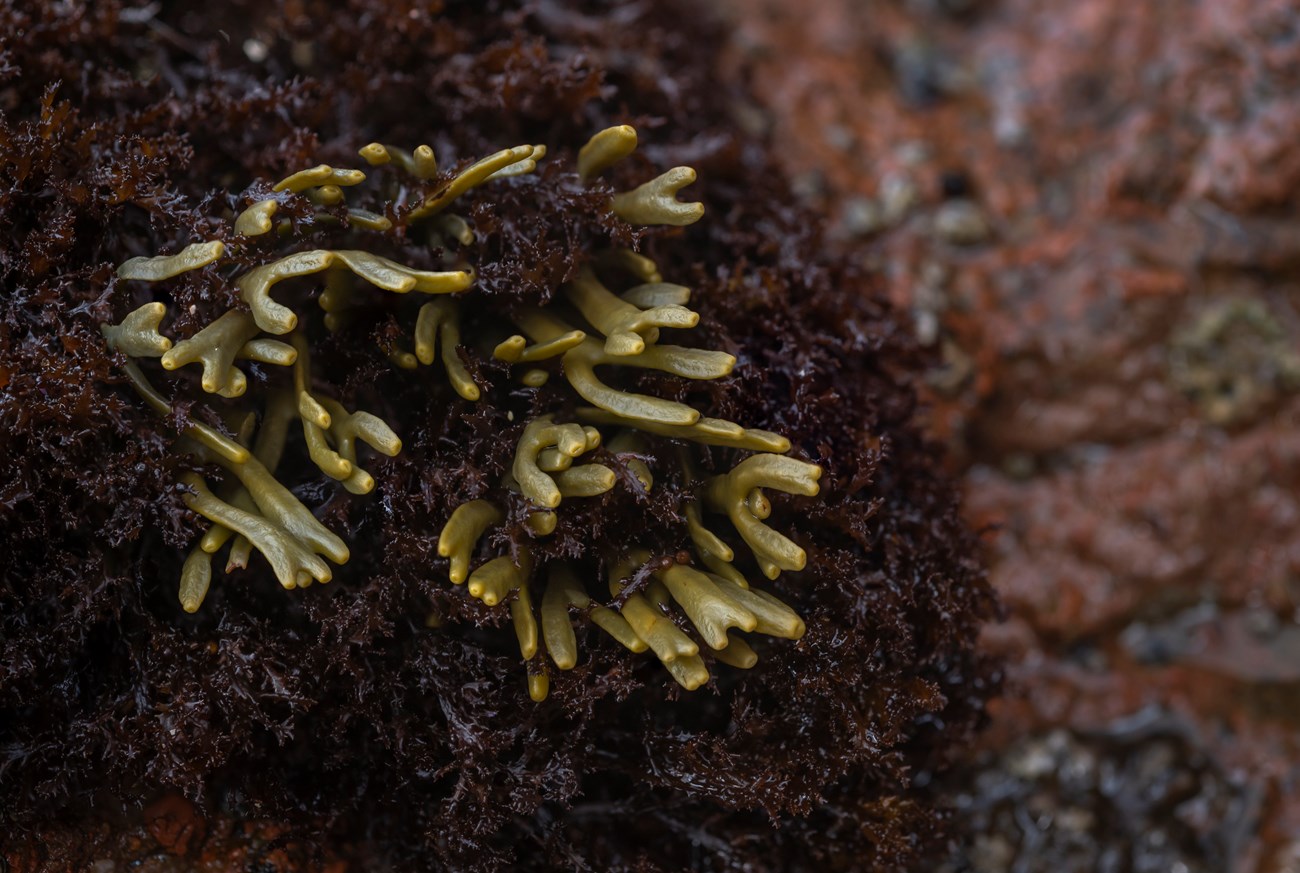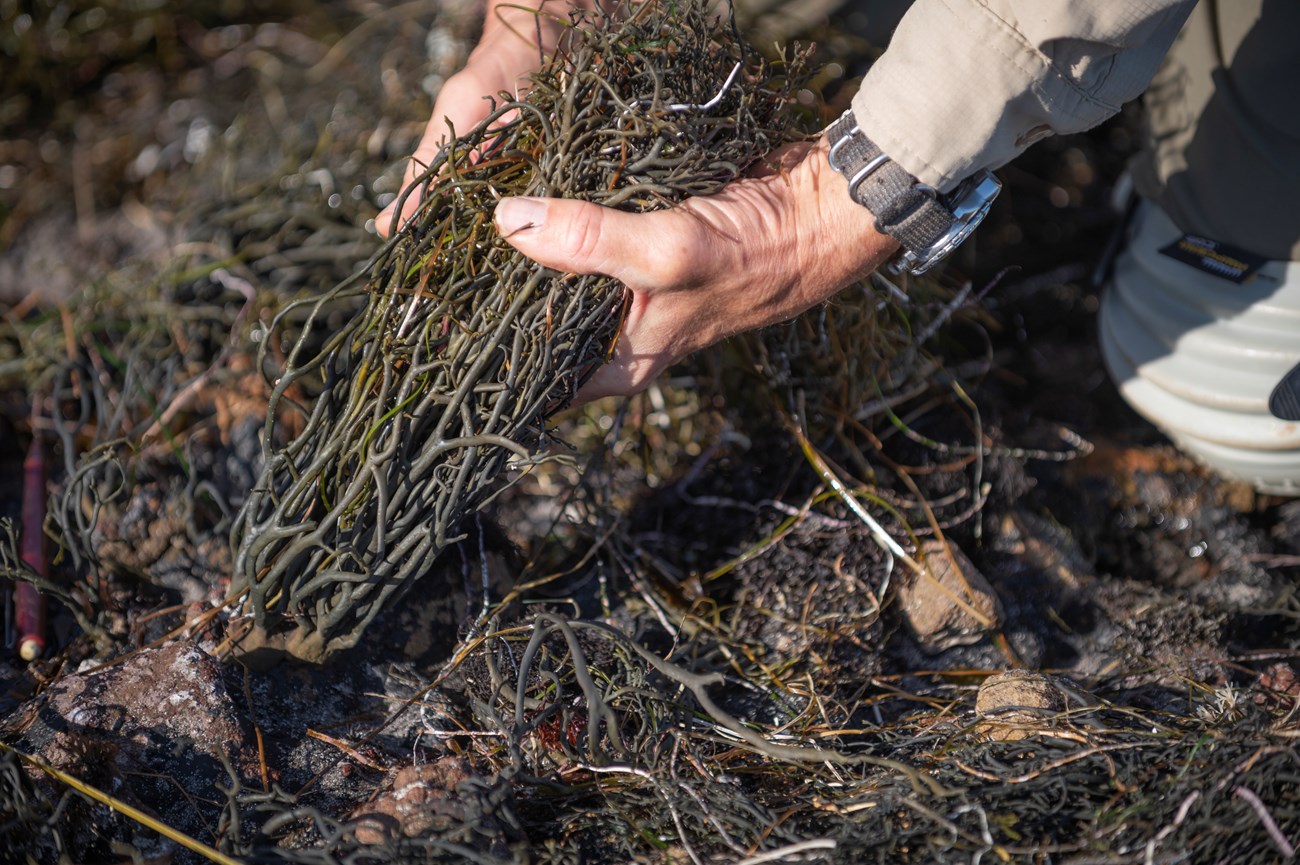Last updated: March 8, 2024
Article
Rockweed Resurgence: A Restoration Campaign Off the California Coast

Michael Ready Photography
World of Rockweed

Michael Ready Photography
Steve Whitaker, a marine ecologist with Channel Islands National Park (CHIS), considers himself a 'rockweed geek'. He has spent his career studying rockweed (Silvetia compressa), a brown alga commonly found in southern California. Whitaker recently earned a PhD from the University of California at Santa Barbara examining the factors contributing to the decline, recovery, and restoration success of rockweed. For his research, he analyzed long-term rocky intertidal monitoring data collected at sites across southern and central California. This includes sites on the Channel Islands. Sites at CHIS have been consistently monitored since 1981 – that’s 40+ years – and were used as a control, as they have limited human disturbance compared with sites on the mainland.
What is Rockweed?

Michael Ready Photography
Rockweed Research

Michael Ready Photography
As part of Whitaker’s PhD dissertation, he found that:
(1) Rockweed populations have significantly declined in southern California, and the declines coincided with Santa Ana wind events. These wind events originate over the deserts and typically blow strong, hot winds towards the coast. Santa Ana winds are common in the winter when day-time tides are at their lowest. When these wind events occur during low tides, rockweed is "often observed exhibiting severe drying out with fronds turning crispy". Any increases in the frequency or intensity of Santa Ana wind events, potentially from climate change, are likely to lead to large declines and possible extirpation of rockweed populations in southern California.
(2) Recolonization rates of rockweed are highly variable, and even mild disturbances can have long-lasting effects on rockweed. Long-term monitoring data combined with experimental disturbance treatments at CHIS provided a more accurate measurement of recovery of rockweed populations than what short-term studies typically show. For extreme disturbances, long-lived species like rockweeds took approximately 15 years to recover.
(3) Restoration of rockweed is essential to ecosystem resilience. Finding methods for successfully restoring rockweed remains a challenge, as marine restoration is largely in its infancy compared to terrestrial restoration. New methods for rockweed restoration are continually being tested including transplantation, cultivating outplants, artificial habitat construction, and seeding. In the face of climate change, managed relocation to areas outside their historic range may also be necessary.
Rockweeds have declined worldwide due to urbanization, overexploitation, pollution, and extreme Santa Ana winds. Climate change is expected to exacerbate negative impacts on rockweed. With limited dispersal capacity, rockweed recovery is slow, especially from extreme disturbances. Declines in local populations can lead to extirpation. To support the recovery of rockweed, continued long-term monitoring is needed.
Restoration at
Channel Islands National Park

Michael Ready Photography
CHIS is actively engaged in pioneering restoration efforts based on research findings by Whitaker. One standout method proving to be a pivotal approach in bolstering marine habitats involves rearing rockweed in the lab and strategically transplanting them into the field.
Another method that has been successful at CHIS is the translocation of rockweed in the field to designated restoration sites. While many demographic stages of rockweed have been experimented with, the highest survival rate resulted from translocating adult stages of rockweed. CHIS and other rockweed restoration practitioners target reproductive adults for translocation in hopes that they will contribute to restoration success by seeding the substratum with their gametes. Aware of the limitations in relying solely on moving adult plants, CHIS remains at the forefront of scientific research and adaptive management.
Learn more about conservation efforts to restore rockweed:
- Southern California Research Learning Center: A StoryMap on rockweed restoration on the California Channel Islands
- California Ocean Protection Council: State of California body that works with state and federal agencies, NGOs, tribes, and the public to ensure that California maintains healthy, resilient, and productive ocean and coastal ecosystems
- MARINe (Multi-Agency Rocky Intertidal Network): A large consortium of research groups working together to collect compatible data
Steve Whitaker: Marine Ecologist

Michael Ready Photography
Learn more about Steve’s research.
